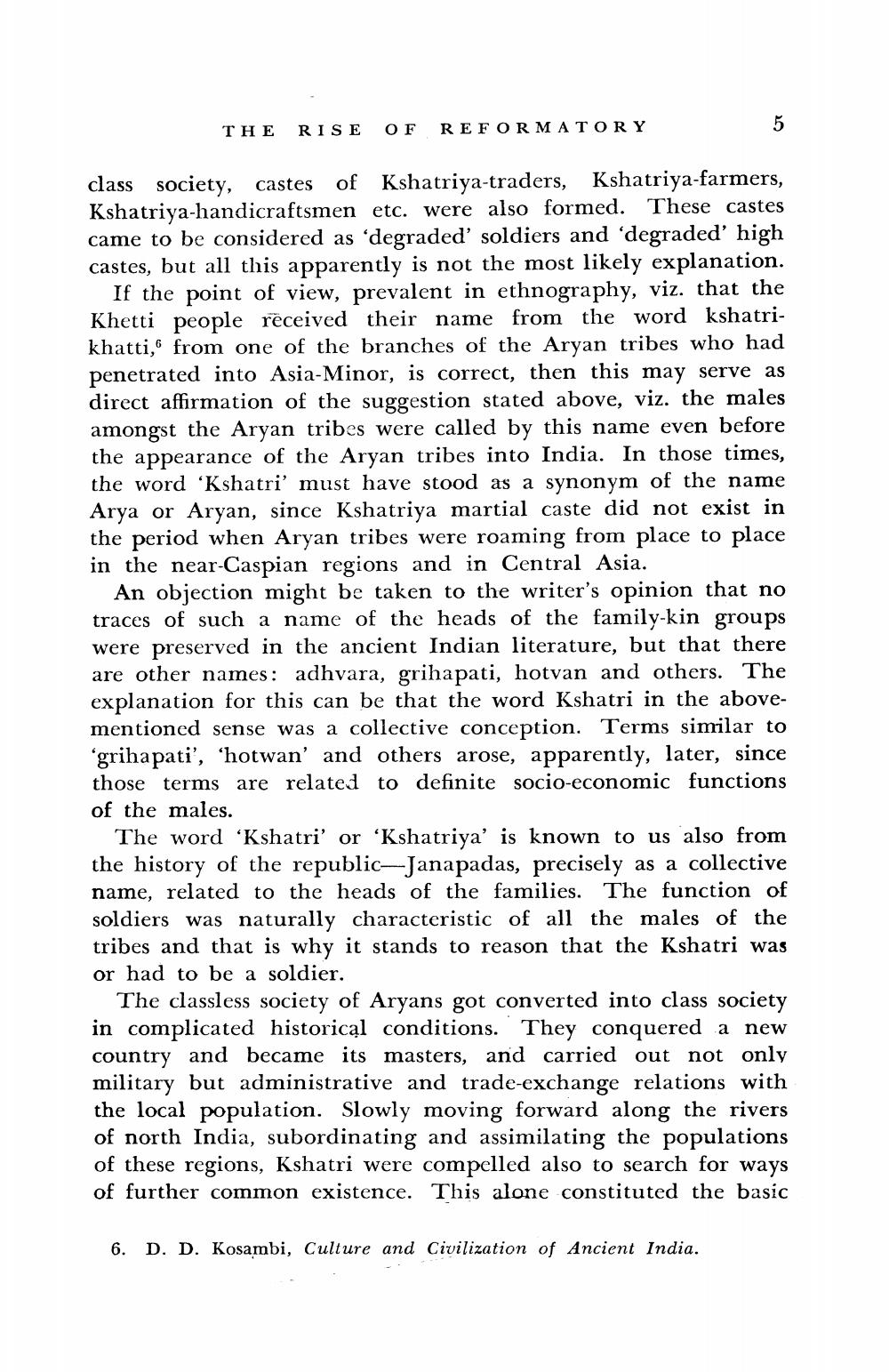________________
THE
RISE OF
REFORMATORY
5
class society, castes of Kshatriya-traders, Kshatriya-farmers, Kshatriya-handicraftsmen etc. were also formed. These castes came to be considered as 'degraded' soldiers and 'degraded' high castes, but all this apparently is not the most likely explanation.
If the point of view, prevalent in ethnography, viz. that the Khetti people received their name from the word kshatrikhatti, from one of the branches of the Aryan tribes who had penetrated into Asia-Minor, is correct, then this may serve as direct affirmation of the suggestion stated above, viz. the males amongst the Aryan tribes were called by this name even before the appearance of the Aryan tribes into India. In those times, the word 'Kshatri' must have stood as a synonym of the name Arya or Aryan, since Kshatriya martial caste did not exist in the period when Aryan tribes were roaming from place to place in the near-Caspian regions and in Central Asia.
An objection might be taken to the writer's opinion that no traces of such a name of the heads of the family-kin groups were preserved in the ancient Indian literature, but that there are other names: adhvara, grihapati, hotvan and others. The explanation for this can be that the word Kshatri in the abovementioned sense was a collective conception. Terms similar to 'grihapati', 'hotwan' and others arose, apparently, later, since those terms are related to definite socio-economic functions of the males.
The word 'Kshatri' or 'Kshatriya' is known to us also from the history of the republic-Janapadas, precisely as a collective name, related to the heads of the families. The function of soldiers was naturally characteristic of all the males of the tribes and that is why it stands to reason that the Kshatri was or had to be a soldier.
The classless society of Aryans got converted into class society in complicated historical conditions. They conquered a new country and became its masters, and carried out not only military but administrative and trade-exchange relations with the local population. Slowly moving forward along the rivers of north India, subordinating and assimilating the populations of these regions, Kshatri were compelled also to search for ways of further common existence. This alone constituted the basic
6.
D. D. Kosambi, Culture and Civilization of Ancient India.




